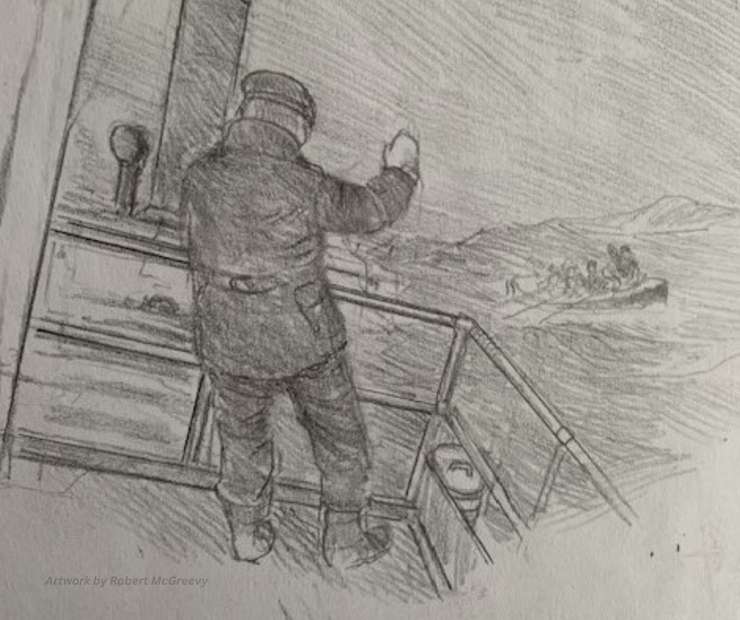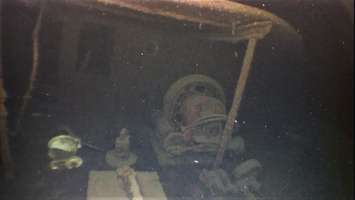The Great Lakes Shipwreck Historical Society (GLSHS), based out of Michigan, has discovered The Arlington, a boat that sank during a storm in 1940.
It was travelling from Port Arthur, Ontario to Owen Sound when it went down in Lake Superior.
The ship was hauling wheat when it was met by a thick fog and a vicious storm that started throwing water on board. The crew couldn't get out of the vessel quick enough.
The GLSHS was tipped off about a potential "anomaly" by Dan Fountain, an independent researcher and shipwreck historian. Together, Fountain and the GLSHS put together a team to investigate.
"It's kind of further Western Lake Superior, in western upper peninsula of Michigan," said Bruce Lynn, executive director of GLSHS. "It's about 35 miles (approximately 56 kilometres) north of Copper Harbour. This was a target that should have been something and it actually was."
The Arlington was not the shipwreck the crew thought it had found. Upon further reading and research, it learned the story of the Arlington and how it went down.
As stated on the Great Lakes Shipwreck Museum's website, the ship hit the storm and was orderd by the first mate, Junis Macksey, to hug the Canadian North shore in an effort to shield the ship from the wind and choppy waters. But the captain, Frederick "Tatey Bug" Burke, felt the ship change course from below deck and ordered it back on its path.
Around 4:30 a.m. on May 1, the emergency alarm was sounded as the Arlington was sinking. Nearby was The Collingwood, a bigger ship also headed to Canada.
Everyone survived the wreck except Burke, who insisted he stay with the ship.
"It's pretty common to have the prevailing winds come out of the north/northwest," said Lynn. "Even when the Edmund Fitzgerald, let's use that as an example, the Fitzgerald, the Arthur, and the Anderson were out there in the Lake November 10, 1975 when they were crossing the lake, they hugged that northern shoreline with that exact same idea. You just get a little more protection. Why? Why did the captain (Burke) choose to change course? Did he just want to get to Owen Sound as quick as possible?"
A string of strange behaviours from Burke is one thing that, unfortunately, will never be answered through the wreck.
All that's known is Burke went down waving to his crew as they sailed away on The Collingwood.

"For us as an organization, I think they're all pretty significant," he said. "Some have more interesting stores than others. The significance for us is we're keeping this memory alive of these ships, the shipping crew. What happened? What were they doing? What was happening at that time?"
Bruce said in the case of the Arlington, although the U.S. wasn't at war when it sunk, Canada was, making it wartime shipping, contributing to history.







